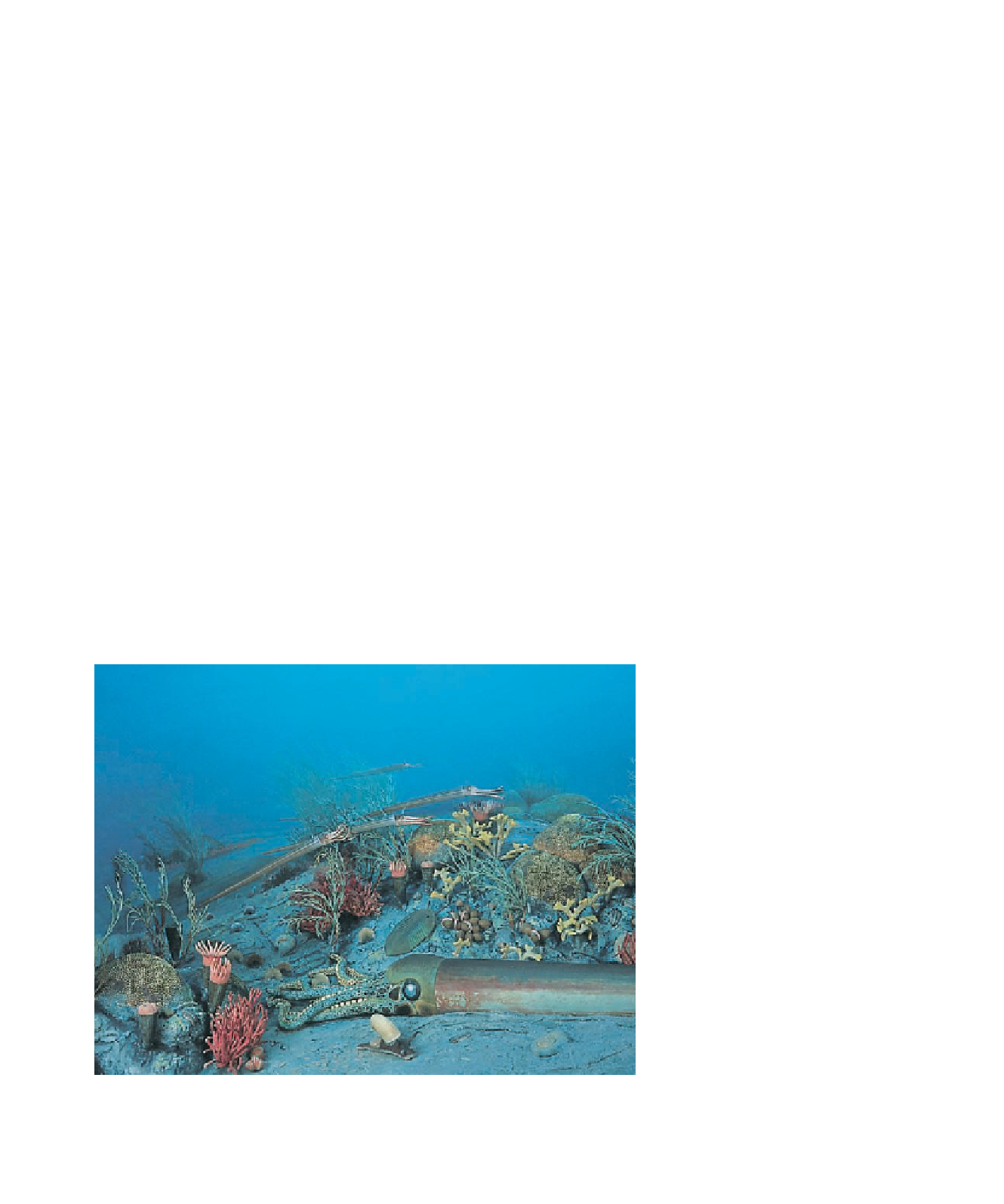Geology Reference
In-Depth Information
This view, however, has been challenged by other pa-
leontologists who think that the initial explosion of var-
ied life-forms in the Cambrian was promptly followed by
a short period of experimentation and then extinction of
many phyla. The richness and diversity of modern life-
forms are the result of repeated variations of the basic
body plans that survived the Cambrian extinctions. In
other words, life was much more diverse in terms of phyla
during the Cambrian than it is today. The reason why
members of the Burgess Shale biota look so strange to us
is that no living organisms possess their basic body plan,
and therefore many of them have been reassigned into
new phyla.
Discoveries of new Cambrian fossils at localities such as
Sirius Passet, Greenland, and Yunnan, China, have resulted
in reassignment of some Burgess Shale specimens back into
extant phyla. If these reassignments to known phyla prove
to be correct, then no massive extinction followed the Cam-
brian explosion, and life has gradually increased in diver-
sity through time. Currently, there is no clear answer to this
debate, and the outcome will probably be decided as more
fossil discoveries are made.
Not only did sedimentation patterns change dramati-
cally from the Cambrian to the Ordovician, but the fauna
underwent equally striking changes. Whereas the Cambrian
invertebrate community was dominated by trilobites, bra-
chiopods, and archaeocyathids, the Ordovician was charac-
terized by the continued diversifi cation of brachiopods and
by the adaptive radiation of many other animal phyla (such as
bryozoans and corals), with a consequent dramatic increase
in the diversity of the total shelly fauna (
Figure 21.7).
During the Cambrian, archaeocyathids were the main
builders of reef-like structures, but bryozoans, stromato-
poroids, and tabulate and rugose corals assumed that role
beginning in the Middle Ordovician. Many of these reefs
were small patch reefs similar in size to those of the Cam-
brian but of a different composition, whereas others were
quite large. As with present-day reefs, Ordovician reefs
showed a high diversity of organisms and were dominated
by suspension feeders.
The end of the Ordovician was a time of mass extinc-
tions in the marine realm. More than 100 families of ma-
rine invertebrates became extinct, and in North America
alone, about half of the brachiopods and bryozoans died
out. What caused such an event? Many geologists think
that these extinctions were the result of the extensive gla-
ciation in Gondwana at the end of the Ordovician Period
(see Chapter 20).
◗
A major transgression that began during the Middle Or-
dovician (Tippecanoe Sequence) resulted in the most
widespread inundation of the craton. This vast epeiric sea,
which was uniformly warm during this time, opened many
new marine habitats that were soon fi lled by a variety of
organisms.
The mass extinction at the end of the Ordovician was fol-
lowed by rediversification and recovery of many of the
decimated groups. Brachiopods,
bryozoans, gastropods, bivalves,
corals, crinoids, and graptolites
were just some of the groups that
rediversifi ed beginning during the
Silurian.
As discussed in Chapter 20, the
Silurian and Devonian were times
of major reef building. Whereas
most of the Silurian radiations of
invertebrates represented the re-
population of niches, organic reef
builders diversified in new ways,
building massive reefs larger than
any produced during the Cam-
brian or Ordovician. This repopu-
lation was probably caused in part
by renewed transgressions over the
craton, and although a major drop
in sea level occurred at the end of
the Silurian, the Middle Paleo-
zoic sea level was generally high
(see Table 20.1).
The Silurian and Devonian
reefs were dominated by tabulate
and colonial rugose corals and
◗
Figure 21.7
Middle Ordovician Marine Community Reconstruction of a Middle Ordovician
seafl oor fauna. Cephalopods, crinoids, colonial corals, trilobites, and brachiopods are shown.

Search WWH ::

Custom Search